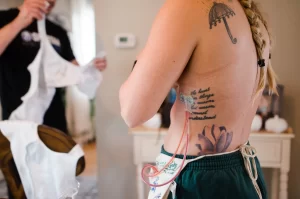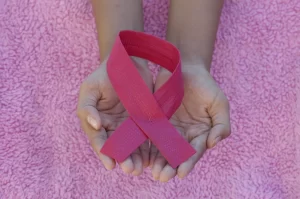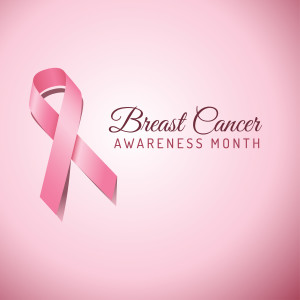By Iris Farrou
30 Sep, 2023
Breast Cancer, Breast health, Lifestyle Tips, Prevention, Procedures, Queer Health, Women's Health
boob job, breast, breast augmentation, Breast cancer, breast lift, chest masculinization, cosmetic, gender affirming surgery, how to fix breast shape, implants, lumpectomy, male breast cancer, male breast reduction, mastectomy, men with breast cancer, partial, reconstruction, reduction, remove implants, surgery, top surgery

The conversation around breast reconstruction surgeries focuses on women who have had either a mastectomy or a lumpectomy done and wish to reconstruct their breasts once they are cancer free. This is a wonderful opportunity for women who are cancer survivors, and of course, a very body-affirming procedure as well! According to 2020 data from the American Society of Plastic Surgeons, breast augmentation surgery has been in the top 5 cosmetic surgeries since 2006, followed by breast implant removals, lifts, and reductions. The highest demographic for breast procedures are women ages 40-54. Sometimes, breast reconstruction surgeries get categorized alongside cosmetic breast procedures. Though there is definitely an overlap, these are the most common breast surgeries:
- Breast augmentation that increases the size of the breasts and may affect the shape and cleavage as well.
- Breast lift, which tightens the existing tissue for a more refined breast shape.
- A combination of breast augmentation with lift, for a one-time makeover.
- Breast revision: patients update their existing implants, can change the size or shape of their breasts, or completely remove the implants.
- Breast reduction for women with excessively large breasts that affect either their body image, create physical problems, or both.
- Male breast reduction for men with excess fat and glandular tissue on their breasts.
All of these procedures reconstruct the breasts in one way or another, and the reasons are often both cosmetic and medical, as well as mental health reasons. A prime example of this is gender affirming top surgery for trans people: either chest feminization or chest masculinization. For chest feminization, surgeons will usually recommend breast augmentation with implants or fat grafting, or a combination. When it comes to chest masculinization, surgeons perform a type of mastectomy that removes breast tissue, eliminates the crease on the bottom of the breast, and reconstructs the nipples according to the patient’s preferences.
Women who have undergone double or partial mastectomy, or a lumpectomy, may choose to have breast reconstruction surgery. Patients whose breast cancer can be removed with surgery have more options on the type of surgery they get done–and can usually have immediate reconstruction surgery right after their breast cancer surgery. However, for medical and/or personal reasons, women can also choose to have delayed reconstruction surgery: months or even years later. There are two main types of post-cancer breast reconstruction surgery:
- Flap Reconstruction: this surgery uses tissue from your own body to form one or both breasts. There are several types of flaps, and the choice is made on a case by case basis. Your surgeon will consider which type is appropriate for you, and whether you safely qualify for this type.
- Implant Reconstruction: much like the cosmetic procedure, silicone or saline implants are used to reconstruct the breast tissue. Your surgeon will either lift the chest muscle and place the implant underneath, or they may place the implant above the chest muscle if they can.
Since every body and case is different, not all options may be available. Whether for medical or cosmetic reasons, consult with your surgeon about your breast surgery options, get several opinions if you can, and see if you are eligible for insurance coverage. Keep in mind some procedures may take a long time to be completed, may need to successfully happen over a period of months, or be regularly maintained to ensure your health and safety.
More
By Iris Farrou
05 Oct, 2022
Breast Cancer, Breast health, Lifestyle Tips, Prevention, Queer Health, Women's Health, Young adults & teens
Breast cancer, Breast cancer awareness month Buffalo, Breast Cancer Treatments, Breast Care Treatment Buffalo NY, Mammogram Buffalo NY, New Treatments for Breast Cancer 2022
Thinking about breast cancer treatments is undoubtedly not the most enjoyable activity
one can engage in, but knowing your options can be a revealing and empowering experience. If
you have been diagnosed with breast cancer, it is very likely you will have one or more of these
experts in your treatment team: a breast surgeon or surgical oncologist, who is a doctor
specializing in surgery to topically treat breast cancer; a radiation oncologist, who specializes in
using radiation against breast cancer–also a topical treatment.

Some other experts, who focus more on systemic treatments, are a medical oncologist–a doctor who uses chemotherapy,
hormone treatment, immunotherapy, and other medicines to battle cancer and a plastic surgeon
who–as you may know–is there to reconstruct or repair parts of the body.
Local, or topical, treatments treat the tumor without affecting the rest of the body; surgery
and radiation are local treatments. Depending on the type of breast cancer, its stage, and your
overall health, you may need other types of treatment as well (before or after surgery, or both):
those are called systemic treatments because they reach cells almost anywhere in the body.
Systemic treatments can be given by mouth, put into the bloodstream, or injected in a muscle.
2022 has been a great year for breast cancer treatment, as the FDA approved a new drug
to treat HER2-Low Breast Cancer: trastuzumab deruxtecan (T-DXd). The approval came
through on August 5, 2022 and this therapy is meant to help patients who suffer from HER-2-
Low Breast Cancer that has spread to other parts of the body and cannot be surgically removed.
The clinical trial results for T-DXd were presented by medical oncologist Shanu Modi to this
year’s American Society of Clinical Oncology meeting. The clinical trial was led by Memorial
Sloan Kettering Cancer Center, and according to Dr. Modi, its results redefine how many
patients with metastatic cancer will be treated.
Targeted therapy works by identifying and attacking certain types of cancer cells, but it
doesn’t kill normal cells so its side effects are fewer than other treatments. However, until now
HER2 treatment has not been successful in treating cancer that is HER2-low. During the trial,
patients were given Enhertu (or T-DXd) which targets the protein HER2. The patients who
received Enhertu did noticeably better than the patients who received standard chemotherapy!
The new targeted drug held the cancer of the receivers in check nearly twice as long, and also
increased the survival rate by 35%.
This is wonderful news for breast cancer patients, and a great advancement in breast
cancer research and treatments! To consider if this is the right treatment for you, ask your
medical professional, and seek as much information as possible before you make a decision.
More
By Iris Farrou
05 Oct, 2022
Breast health, Lifestyle Tips, Prevention, Queer Health, Women's Health, Young adults & teens
Best OBGYN Groups in Buffalo, Breast cancer, Breast cancer awareness, Breast cancer awareness month, Buffalo OBGYN, cancer charity, mammogram, When do I need a mammogram
October is best known as the month dedicated to spooky costumes and candy, but it is
also the month dedicated to Breast Cancer Awareness. Apart from skin cancers, breast cancer is
the most common one among American women. Facts show us that 1 in 8 women in the US will
receive a diagnosis of breast cancer in her lifetime, but the really good news is that 65% of cases
are diagnosed at a localized state–meaning that the cancer has not spread past the breast–for
which the five-year survival rate is 99%.

It is also encouraging to hear that there are over 3.8
million breast cancer survivors in the United States alone. The positive facts about breast cancer
assure us that science is working hard to enhance the survival rate for women who are diagnosed
with breast cancer, and is also making great strides to provide successful preventative
techniques.
During the month of October, there are continued efforts to fundraise money for
dedicated breast-cancer research, to support survivors, and to spread awareness and information
to younger women. If you are in Buffalo, NY you may want to consider participating in the
annual Making Strides of Buffalo walk, which is dedicated to making an impact and saving lives,
organized by Roswell Park Comprehensive Cancer Center. This year, the event takes place on
October 22nd, and you can easily sign up for the event on the American Cancer Society’s
website. The event does not have a registration fee, so it is accessible to a greater number of
people.
If you cannot attend the event in person, you can also make a donation, and keep
fundraising going by looking into the Matching Gifts programs: many employers will match
their employees’ charitable donations, or even volunteer hours, thus doubling the impact
individuals make on Breast Cancer Awareness! You can find out directly from your employer if
they are registered for a matching gifts program, or you can use the tool provided by Double the
Donation.
Another great way to support research and other initiatives toward Breast Cancer
Awareness is to create your own fundraising events; many tech-savvy folks set up their own
fundraising pages, or they simply ask their loved ones to collect donations towards this cause in
lieu of birthday, wedding, or anniversary gifts. If you have an online presence, you can easily
bring people together through Facebook or Instagram Live, and even Zoom, to provide support,
share knowledge, and build a community.
Breast Cancer Awareness Month
Fundraising for Breast Cancer: 8 Breast Cancer Awareness Month Ideas to Make an Impact
More
 Last week, actress Julia Louis-Dreyfus announced she has breast cancer in a post on her official Twitter account saying, “1 in 8 women get breast cancer. Today, I’m the one”.
Last week, actress Julia Louis-Dreyfus announced she has breast cancer in a post on her official Twitter account saying, “1 in 8 women get breast cancer. Today, I’m the one”.
According to the National Breast Cancer Foundation, one in eight women in the United States will be diagnosed with breast cancer in their lifetimes. While we have made significant strides in breast cancer treatment options, the safest way to protect yourself from this deadly disease is through awareness and early detection. As we spend the month of October wearing pink ribbons and reflecting on those we’ve lost, and those who have persevered, take the time to familiarize yourself with the latest breast cancer screening guidelines. By following a regular routine of administering self-exams, and receiving recommended screenings from your OBGYN, you will put yourself in the best position to help us continue the fight against breast cancer.
Breast Cancer Screening Guidelines
According to the American Cancer Society, the frequency with which women should obtain a breast cancer screenings from their OBGYN is dependent upon age. More specifically:
- Women ages 40 to 44 are recommended to receive a mammogram annually if desired.
- Women ages 45 to 54 are recommended to receive a mammogram annually.
- Women 55 and older are recommended to receive a mammogram every two years but may continue to receive annual screenings if desired.
Regular Self-Exams
In addition to mammography screenings, women should also perform routine self-breast exams. Regular self-examinations help women ensure they are familiar with their breasts so that if any abnormality develops, they can identify the change and make an appointment to be examined by a doctor.
Family History
Women with a personal, or a family history of breast cancer are recommended to receive more frequent screenings. If your mother, sister(s), or grandmother(s) have been diagnosed with breast cancer, talk to your OBGYN. He/she will help you determine when to start receiving regular mammography screenings, and whether or not an MRI is also advisable to test for abnormalities.
Other Risk Factors
In addition to your family history, your doctor will need to have an understanding of other factors that could increase your risk of breast cancer and that may impact when you should begin receiving breast cancer screenings, and with what frequency. Such risk factors may include:
- Your age. A woman’s risk of a breast cancer diagnosis increases with age, particularly up until age 50.
- Childbearing history. The older a woman is when she has her first child, the greater her risk of developing breast cancer in her lifetime. Women who never have children are also at a greater risk of developing breast cancer.
- Menstruation history. Women are at a higher risk of breast cancer if they menstruated for the first time before age 12 or if they go through menopause after age 55.
- Genetic factors. Women with a mutation in the BRCA1 or BRCA2 genes are at a higher risk of developing breast cancer.
If you have any questions or concerns regarding your personal risk of breast cancer, talk to your OBGYN. He or she will be able to discuss your personal risk factors and will help you to determine a routine screening frequency plan that is right for you.
More




